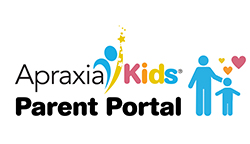There are some key characteristics that help your child’s therapist make the diagnosis of CAS. Of these, three are the most agreed upon by experts.
- The first characteristic is that the errors the child makes when saying consonants and vowels in syllables or words are not consistent over repeated trials or as the productions become longer and more complex (Iuzzini-Siegel, Hogan, Green, 2017 and Grigos, Moss, Lu, 2015.) In other words, when your child is saying a new word that they do not already know how to say correctly, it does not always sound the same in repeated productions. There also may be some sounds that the child can produce in one word but not in another, or at the end of the words but not beginning.
- A second characteristic is lengthened and disrupted coarticulatory transitions between sounds and syllables (Murray, McCabe, Heard, Ballard, 2015). As humans we do not speak by producing sounds in isolation. We string sounds together in words in connected speech which is known as coarticulation. The child with CAS has difficulties connecting the sounds together so that their speech may have inappropriate breaks or pauses or sound choppy.
- The third key feature is inappropriate prosody. Prosody refers to the rhythm, stress, and intonation patterns we use while speaking. Prosody provides us with clues about the way people feel. It helps us know whether the speaker is making a statement, asking a question or being sarcastic. Inappropriate prosody can cause speech to sound flat or monotone, or have too much variability in the tone. Stress in words or sentences can be incorrect which can cause confusion (play a record vs record a meeting).
There are other characteristics that may be present when a child has CAS.
- Your child may only be able to say a few consonants and vowels, or they might pronounce them incorrectly. Children with CAS can have difficulty producing vowels correctly which children with most other speech sound disorders do not typically have.
- Their speech sound development may not follow a typical pattern. For example, the child may be able to say the ‘r’, which is typically a later developing sound, but not a ‘p’ which generally develops very early.
- Children with CAS will typically have more trouble on longer words or utterances than they have saying more simple words or sequences of sounds.
- They can speak slower or faster than normal.
- Some children may physically struggle to start saying a word and have physical trial and error movements before getting the right sound placement.
- Children may have difficulties copying movements that are not related to speaking like sticking out their tongue, smiling, blowing a kiss, or puffing their cheeks (i.e., oral apraxia).
- A child with CAS may not have babbled as much as typical children, started to speak late or lose words that they have learned.
Additionally, CAS is difficult to diagnose at the present time as there is not a generalized agreement on what the most important characteristics are and how much of a characteristic or how many characteristics are required for a diagnosis. Therefore, it takes a clinician who specializes and is knowledgeable in CAS to make the diagnosis of CAS.
References:
Grigos, M., Moss, A., & Lu, Y. (2015). Oral articulatory control in childhood apraxia of speech. Journal of Speech, Language, and Hearing Research, 58(4), 1103-1118 doi:10.1044/2015_JSLHR-S-13-0221
Iuzzini-Siegel, J., Hogan, T.P., & Green, J.R. (2017). Speech inconsistency in children with childhood apraxia of speech, language impairment, and speech delay: Depends on the stimuli. Journal of Speech, Language, and Hearing Research, 60(5), 1194-1210. 1194–1210. doi: 10.1044/2016_JSLHR-S-15-0184
Murray, E., McCabe, P., Heard, R., & Ballard, K.J. (2015). Differential diagnosis of children with suspected childhood apraxia of speech. Journal of Speech, Language, and Hearing Research, 58(1), 43-60. doi: 10.1044/2014_JSLHR-S-12-0358
By Karem Isaac, M.S., CCC-SLP
October, 2021
